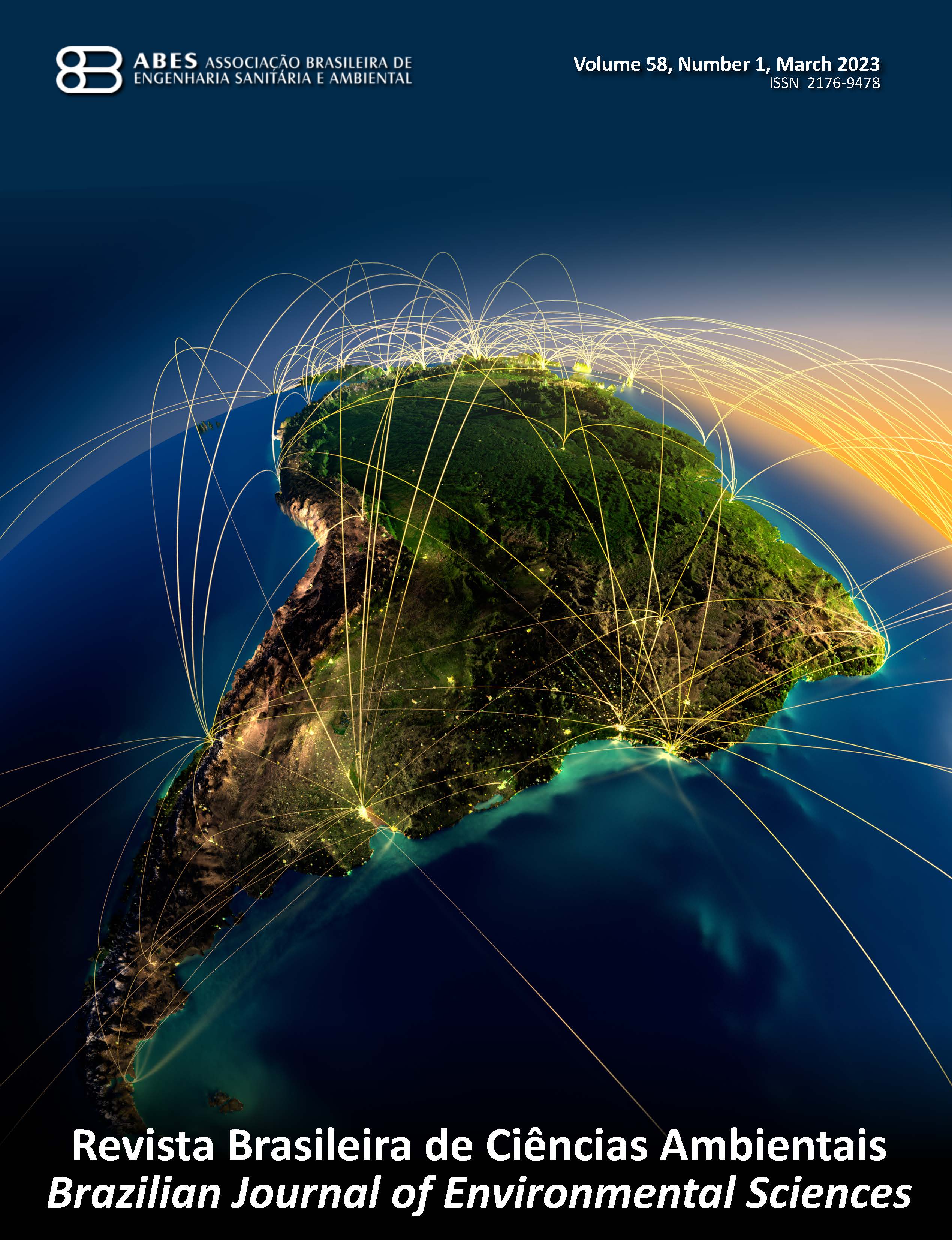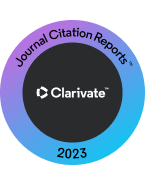Spatio-temporal evaluation of ecosystem services in the São Paulo Macrometropolis, Brazil
DOI:
https://doi.org/10.5327/Z2176-94781638Keywords:
Land-cover change, Regional assessment, Ecosystem services mapping, Policy makingAbstract
Urbanization is one of the key factors that drive changes in ecosystem services. Although various studies have analyzed relationships between land-cover change and ecosystem services degradation, few have explored the impacts in future scenarios in mega metropolitan areas. This work performed an individual and integrated spatio-temporal assessment of four ecosystem services in the São Paulo Macrometropolis, the largest urban agglomeration in Latin America, in different land-cover scenarios using Integrated Valuation of Ecosystem Services and Tradeoffs (InVEST) software. Correlation analysis and map algebra were used to identify trade-offs and synergies, as well as hotspots and coldspots of multiple ecosystem services. The results showed decreasing trends in the supply capacity of erosion control, carbon storage, and seasonal water yield in the entire São Paulo Macrometropolis and most of its Regional Units, as well as evidence of a worsening of trade-offs between the ecosystem services evaluated. Furthermore, areas with a high supply of three or more ecosystem services were coincident with Conservation Areas, emphasizing the importance of these protected areas. By revealing important relationships among four ecosystem services, the outputs suggest regions and combinations of services for which spatial planning and appropriate conservation mechanisms can be used to optimize synergies and mitigate trade-offs. The results can help land use planning practitioners and decision-makers to design management strategies and policies for conservation and restoration based on linkages between specific units and associated ecosystem services and their trade-offs in this strategic region of Brazil.
Downloads
References
Aryal, K., Maraseni, T., Apan, A. 2022. How much do we know about trade-offs in ecosystem services? A systematic review of empirical research observations. Science of The Total Environment, 806, 151229. https://doi.org/10.1016/j.scitotenv.2021.151229.
Bennett, E. M., Peterson, G. D., Gordon, L. J. 2009. Understanding relationships among multiple ecosystem services. Ecology letters, 12(12), 1394-1404. https://doi.org/10.1111/j.1461-0248.2009.01387.x.
Cademus, R., Escobedo, F. J., McLaughlin, D., Abd-Elrahman, A. 2014. Analyzing trade-offs, synergies, and drivers among timber production, carbon sequestration, and water yield in Pinus elliotii forests in Southeastern USA. Forests, 5(6), 1409-1431. https://doi:10.3390/f5061409.
Calaboni, A., Leite, M. D. S., Campanha, J. S., Oliveira, C. E. D., Resende, R. U., Pavanelli, J. M. M., Igari, A. T. 2020. ODS 15–Vida terrestre–Histórico, governança e perspectivas para conservação dos ecossistemas terrestres na Macrometrópole Paulista. ODS 15.
Carpenter, S. R., Pingali, P. L., Bennett, E. M., Zurek, M. B. 2005. Ecosystems and human well-being: scenarios: findings of the Scenarios Working Group, Millennium Ecosystem Assessment. eds (No. 333.9 ECO V. 2. CIMMYT.).
Carr, M. H., Zwick, P. D. 2007. Smart land-use analysis: the LUCIS model land-use conflict identification strategy. Redlands, CA, USA: ESRI, Inc.
Cavender-Bares, J., Polasky, S., King, E., & Balvanera, P. (2015). A sustainability framework for assessing trade-offs in ecosystem services. Ecology and Society, 20(1). http://dx.doi.org/10.5751/ES-06917-200117.
Costanza, R., De Groot, R., Braat, L., Kubiszewski, I., Fioramonti, L., Sutton, P., Faber, S., Grasso, M. 2017. Twenty years of ecosystem services: how far have we come and how far do we still need to go? Ecosystem services, 28, 1-16. https://doi.org/10.1016/j.ecoser.2017.09.008.
De Groot, R. S., Fisher, B., Christie, M., Aronson, J., Braat, L., Haines-Young, R., Maltby, E., Neuville, A., Polasky, S., Portela, R., Ring, I. 2010. Integrating the ecological and economic dimensions in biodiversity and ecosystem service valuation. In The economics of ecosystems and biodiversity (TEEB): ecological and economic foundations (pp. 9-40). Earthscan, Routledge.
Deng, X., Li, Z., Gibson, J. 2016. A review on trade-off analysis of ecosystem services for sustainable land-use management. Journal of Geographical Sciences, 26, 953-968. https://doi:10.1007/s11442-016-1309-9.
Dib, V.; Nalon, M.A.; Amazonas, N.T.; Vidal, C.Y.; Ortiz-Rodríguez, I.A.; Daněk, J. 2020. Drivers of change in biodiversity and ecosystem services in the Cantareira System Protected Area: A prospective analysis of the implementation of public policies. Biota Neotropica, v. 20, n. suppl 1, p. e20190915. https://doi.org/10.1590/1676-0611-BN-2019-0915.
Duarte, G. T., Ribeiro, M. C., Paglia, A. P. 2016. Ecosystem services modeling as a tool for defining priority areas for conservation. PloS One, 11(5), e0154573. https://doi.org/10.1371/journal.pone.0154573.
Egoh, B., Reyers, B., Rouget, M., Richardson, D. M., Le Maitre, D. C., van Jaarsveld, A. S. 2008. Mapping ecosystem services for planning and management. Agriculture, Ecosystems & Environment, 127(1-2), 135-140. https://doi.org/10.1016/j.agee.2008.03.013.
Elmqvist, T., Setälä, H., Handel, S. N., van der Ploeg, S., Aronson, J., Blignaut, EGómez-Baggethun, J. N., Nowak, D.J., Kronenberg, J., de Groot, R. 2015. Benefits of restoring ecosystem services in urban areas. Current opinion in environmental sustainability, 14, 101-108. https://doi.org/10.1016/j.cosust.2015.05.001.
Fick, S. E., Hijmans, R. J. 2017. WorldClim 2: new 1‐km spatial resolution climate surfaces for global land areas. International journal of climatology, 37(12), 4302-4315. https://doi.org/10.1002/joc.5086.
Fiorini, A. C. O., Mullally, C., Swisher, M., Putz, F. E. 2020. Forest cover effects of payments for ecosystem services: Evidence from an impact evaluation in Brazil. Ecological Economics, 169, 106522. https://doi.org/10.1016/j.ecolecon.2019.106522.
Gómez-Baggethun, E., Barton, D. N. 2013. Classifying and valuing ecosystem services for urban planning. Ecological economics, 86, 235-245. https://doi.org/10.1016/j.ecolecon.2012.08.019.
Gonçalves, D., Júnior, W. C. S., de Resende Londe, L., Coutinho, M. P., & Mendes Filho, W. M. 2021. Land use and land cover changes in São Paulo Macro Metropolis and implications for water resilience under climate change. Sustainability in Debate, 12(2), 13-50. https://doi.org/10.18472/SustDeb.v12n2.2021.32146.
Gutsch, M., Lasch-Born, P., Kollas, C., Suckow, F., Reyer, C. P. 2018. Balancing trade-offs between ecosystem services in Germany’s forests under climate change. Environmental Research Letters, 13(4), 045012. https://doi.org/10.1088/1748-9326/aab4e5.
Hernandez, M., Kepner, W. G., Goodrich, D. C., Semmens, D. J. 2010. The use of scenario analysis to assess water ecosystem services in response to future land use change in the Willamette River Basin, Oregon. In Achieving environmental security: Ecosystem services and human welfare (pp. 97-111). IOS Press. https://doi.org/103233/978-1-60750-579-2-97.
JPL, N. 2020. NASADEM Merged DEM Global 1 arc second V001. NASA EOSDIS Land Processes DAAC. Available in: <https://lpdaac.usgs.gov/products/nasadem_hgtv001>. Acessed in: 14 abr. 2021.
Larsen, F. W., Londoño‐Murcia, M. C., Turner, W. R. 2011. Global priorities for conservation of threatened species, carbon storage, and freshwater services: scope for synergy? Conservation Letters, 4(5), 355-363. http://dx.doi.org/10.1111/j.1755-263X.2011.00183.x.
Li, B., Wang, W., Wang, Y. 2020. Identifying the relationships among multiple ecosystem services. Journal of Arid Environments, 183, 104265. https://doi.org/10.1016/j.jaridenv.2020.104265.
Machado, C. B., de Freitas, E. D. 2021. Projeções de Uso e Cobertura da Terra na Macrometrópole Paulista. Diálogos Socioambientais, 4(11), 36-39.
Mannigel, A. R. et al. 2002. Fator erodibilidade e tolerância de perda dos solos do Estado de São Paulo. Acta Scientiarum. Agronomy, 24, 1335-1340. https://doi.org/10.4025/actasciagron.v24i0.2374.
Marques, M. G. 2018. Comparação de balanço hídrico na restauração de APP com mata nativa e sistema agroflorestal: um estudo de caso. Master Thesis.Instituto Tecnológico de Aeronáutica - ITA, São José dos Campos. Retrieved 2022-27-07, from http://www.bdita.bibl.ita.br/.
MEA, M. E. A. Ecosystems and Human Well-being: A Framework for Assessment. Washington, DC: Island Press, 2005
Momm-Schult, S. I., Empinotti, V., Zioni, S., Travassos, L. 2015. The relation between the water resources management and territorial planning in São Paulo Macro Metropolis (Brazil). In 51st ISOCARP Congress Proceedings (pp. 1117-1128) .
Ndong, G. O., Therond, O., Cousin, I. 2020. Analysis of relationships between ecosystem services: A generic classification and review of the literature. Ecosystem services, 43, 101120. https://doi.org/10.1016/j.ecoser.2020.101120.
Pavani, B. F; Ribeiro, T.C.L; Gonçalves, D.A.; Souza Júnior, W.C.; Giarolla, A.; Arraut, E.M. 2018. Pagamentos por serviços ecossistêmicos para proteção de recursos hídricos na Área de Proteção Ambiental da Bacia do Rio Paraíba do Sul. Ambiente & Sociedade. Vol. 23, 2020 n Special Issue. e0134. https://doi.org/10.1590/1809-4422asoc20190134r1vu2020L2DE
Pavani, B. F., Júnior, W. C. S., Inouye, C. E., Vieira, S. A., Mello, A. Y. 2018. Estimating and valuing the carbon release in scenarios of land-use and climate changes in a Brazilian coastal area. Journal of environmental management, 226, 416-427. https://doi.org/10.1016/j.jenvman.2018.08.059.
Petroni, M. L., Siqueira-Gay, J., Gallardo, A. L. C. F. 2022. Understanding land use change impacts on ecosystem services within urban protected areas. Landscape and Urban Planning, 223, 104404. https://doi.org/10.1016/j.landurbplan.2022.104404.
Rossi, M. 2017. Mapa pedológico do estado de São Paulo: revisado e ampliado. São Paulo: Instituto Florestal.
Sartori, A., Lombardi Neto, F., Genovez, A. M. 2005. Classificação hidrológica de solos brasileiros para a estimativa da chuva excedente com o método do Serviço de Conservação do Solo dos Estados Unidos Parte 1: Classificação. Revista Brasileira de Recursos Hídricos, 10(4), 05-18.
Schröter, M., Remme, R. P. 2016. Spatial prioritisation for conserving ecosystem services: comparing hotspots with heuristic optimisation. Landscape Ecology, 31, 431-450. https://doi.org/10.1007/s10980-015-0258-5.
Sharp, R. et al. 2018 InVEST 3.5.0 User’s Guide. The Natural Capital Project. Stanford University, University of Minnesota, The Nature Conservancy, and World Wildlife Fund.
Silva, A. M., Schulz, H. E., Camargo, P. B. de. 2003. Erosão e hidrossedimentologia em bacias hidrográficas. São Carlos: RiMa.
Silva, G., Fonseca, M. D. L. 2013. São Paulo, city-region: constitution and development dynamics of the São Paulo Macrometropolis. International Journal of Urban Sustainable Development, 5(1), 65-76. https://doi.org/10.1080/19463138.2013.782707.
Silva Cruz, J., Blanco, C. J. C., & de Oliveira Júnior, J. F. (2022). Modeling of land use and land cover change dynamics for future projection of the Amazon number curve. Science of the total environment, 811, 152348. https://doi.org/10.1016/j.scitotenv.2021.152348.
Soares-Filho, B. S., Cerqueira, G. C., Pennachin, C. L. 2002. DINAMICA—a stochastic cellular automata model designed to simulate the landscape dynamics in an Amazonian colonization frontier. Ecological modelling, 154(3), 217-235. https://doi.org/10.1016/S0304-3800(02)00059-5.
Souza, C. M., Z. Shimbo, J., Rosa, M. R., Parente, L. L., A. Alencar, A., Rudorff, B. F., ... Azevedo, T. 2020. Reconstructing three decades of land use and land cover changes in Brazilian biomes with Landsat archive and earth engine. Remote Sensing, 12(17), 2735. https://doi.org/10.3390/rs12172735.
Spanò, M., Leronni, V., Lafortezza, R., Gentile, F. 2017. Are ecosystem service hotspots located in protected areas? Results from a study in Southern Italy. Environmental Science & Policy, 73, 52-60. https://doi.org/10.1016/j.envsci.2017.04.008.
Sun, X., Li, F. 2017. Spatiotemporal assessment and trade-offs of multiple ecosystem services based on land use changes in Zengcheng, China. Science of the Total Environment, 609, 1569-1581. https://doi.org/10.1016/j.scitotenv.2017.07.221.
Tavares, J. 2018. Formação da macrometrópole no Brasil: Construção teórica e conceituai de uma região de planejamento. EURE (Santiago), 44(133), 115-134. http://dx.doi.org/10.4067/s0250-71612018000300115.
Teixeira, D. B. de S., Cecílio, R. A., Oliveira, J. P. B. de, Almeida, L. T. de, & Pires, G. F. 2022. Rainfall erosivity and erosivity density through rainfall synthetic series for São Paulo State, Brazil: Assessment, regionalization and modeling. International Soil and Water Conservation Research, 10(3), 355–370. https://doi.org/10.1016/j.iswcr.2021.10.002
Torres, P. H. C., Ramos, R. F., Gonçalves, L. R. 2019. Environmental conflicts at São Paulo macrometropolis: Paranapiacaba and São Sebastião. Ambiente & Sociedade, 22. https://doi.org/10.1590/1809-4422asoc20190101vu2019L2AO.
Wang, S., Hu, M., Wang, Y., Xia, B. 2022. Dynamics of ecosystem services in response to urbanization across temporal and spatial scales in a mega metropolitan area. Sustainable Cities and Society, 77, 103561. https://doi.org/10.1016/j.scs.2021.103561.
Wischmeier, W. H.; Smith, D. D. 1978. Predicting rainfall erosion losses - a guide to conservation planning. Washington: Agriculture Science and Education Administration.
Wu, C., Qiu, D., Gao, P., Mu, X., Zhao, G. 2022. Application of the InVEST model for assessing water yield and its response to precipitation and land use in the Weihe River Basin, China. Journal of Arid Land, 14(4), 426-440. https://doi.org/10-1007/S40333-022-0013-0.
Yang, Y, Li, M., Feng, X., Yan, H. Su,M. Wu, M. 2021. Spatiotemporal variation of essential ecosystem services and their trade-off/synergy along with rapid urbanization in the Lower Pearl River Basin, China, Ecological Indicators, 133. https://doi.org/10.1016/j.ecolind.2021.108439.
Zhang, L., Fu, B., Lü, Y., Zeng, Y. 2015. Balancing multiple ecosystem services in conservation priority setting. Landscape Ecology, 30, 535-546. https://doi.org/10.1007/s10980-014-0106-z.
Published
How to Cite
Issue
Section
License
Copyright (c) 2023 Revista Brasileira de Ciências Ambientais

This work is licensed under a Creative Commons Attribution 4.0 International License.

























